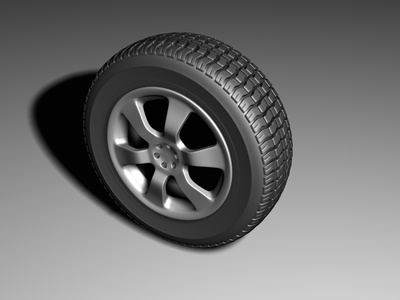
Tire siping was created by a boater named John Sipe who cut grooves into the soles of his shoes to get more traction on boat decks. Eventually the process was also used on tires. Siping is the practice of cutting small parallel grooves into the tread blocks of tires. (Portion of the tire that comes in contact with the road.) The sipes (cuts) allow the tread blocks to spread apart, forcing water out of the tread and giving better grip and traction. Many tire shops will sipe tires for you on a special machine designed to do so, but many siping machines do not account for all tire types and siping can easily be done by you at home.
Set your knife blade to the desired length of the cut that you want to make so that all of the sipes are uniform in depth. Never cut closer than 1/8 inch to the tire carcass (base of the tread block) and never cut more than 1/4 inches in depth.

Place the tip of the blade flat on the tread lug (Sections of rubber on the tread that make contact with the road.) and push the knife across slowly. Make sure that the cuts run at right angles (90 degrees) to the direction of travel. (Across the tire from lip to lip) The blade will heat the rubber and make the cut quickly.

Space your cuts about 1/4" apart. The sipes will be hard to see at first, but spread apart after driving, giving more traction.
Cut on the lugs of the center tread blocks only. 4X4Wire.com recommends that you cut 6 grooves for large lugs and 2 grooves for small ones. Passenger tires can be cut across the tire, but keep the cuts 1/2" back from inner and outer edges of tread blocks. This is to avoid rubber chunking off the tire. Let the tread pattern dictate the location of your sipes. Since tread blocks vary, you may get 3 slits in one block and 4 or 5 in another. Because the blade head allows two cuts to be made with each pass, the entire process is fast and typically takes about 15 minutes per tire.